“Ornette on Tenor”-Ornette Coleman
“Evidence”- Steve Lacy featuring Don Cherry
“The Last From Lennies”- Jaki Byard
“Turning Point”-Paul Bley
“Point of Departure”-Andrew Hill
“Spiritual Unity”-Albert Ayler
________________
Here goes with my 3 or 4 favorites and must echo what someone who you already posted said, which was ask me ten minutes from now or next week and it will be different. Once you get started, keeping it to four is insanely frustrating.
John Coltrane – “Crescent” – This to me is a most perfect album, so much so that when “A Love Supreme” came out six months after this one, I was still transfixed by “Crescent” and slept on “A Love Supreme” for quite a while. I saw this group a lot in NYC at the time and nothing rivaled this level of achievement and depth and perfection. When you hear the rejected versions of some of the tunes from the first of the two sessions for this album, you really hear that Coltrane knew what he was looking for and didn’t stop till he achieved it.
Miles Davis – “Miles Smiles” – Like Coltrane, life in the ‘60s was measured as the waiting time between Miles Davis releases. “Miles Smiles” is the greatest statement by this quintet for me. It has range from incredibly modern compositions like “Dolores” and “Footprints” to hip pocket tunes like “Freedom Jazz Dance” and “Gingerbread Boy.” This came so close to hearing the band at the Village Vanguard. It is among Ron Carter’s greatest moments on record. Listen to it five times, picking a different guy to focus on with each listening.
Art Blakey & The Jazz Messengers – “Free For All” – Oh man, this was one of the greatest bands to hear live. Art had such tone and dynamics on the drums that he could rock your soul in a matter of minutes. This album was at the end of the life of one of the best editions Jazz Messengers with Wayne Shorter, Curtis Fuller, Freddie Hubbard, Cedar Walton and Reggie Workman. Great compositions and great arrangements. Rudy Van Gelder was the seventh member of the band. Nobody captured Art’s power and delicacy like Rudy. The title tune on this album could have been retitled “Eight Orgasms.” Taking it to the limit.
Charles Mingus – “Mingus, Mingus, Mingus, Mingus, Mingus” – Unbelievable. Mingus was the most exciting composer/performer in jazz. His sense of swing was like being chased down hill by a runaway freight train (Blakey had the same effect). This album recorded a lot of his greatest compositions with new titles by an incredible eleven-piece band. Anchored by the deep tones of Jerome Richardson’s baritone and Don Butterfield’s tuba and fueled by the manic Mingus, Jaki Byard and Walter Perkins, Eric Dolphy, Booker Ervin and Richard Williams solo in celebratory shouts over the non-stop madness behind them. And Charlie Mariano’s lead and solo on “I X Love” from an earlier session is breathtaking.
________________
The ’60s was such a productive decade for jazz recordings that it is almost impossible to narrow down favorites to 3 or 4. But off the top of my head (such as it is), and with the understanding that there are many more:
Louis Armstrong and Duke Ellington (Roulette)
Ellington: Far East Suite (RCA)
Coleman Hawkins: Here and Now (Impulse)
Booker Ervin: The Space Book (Prestige)
________________
To do justice to this question, I’ll have to try to reconstruct my state of mind at the end of the ’60s and the first half of the ’70s, when I started listening seriously to jazz. Otherwise, I’ll be citing what I think are the most important records of the decade — an impossible task, given the profusion of great, sometimes transformational recordings generated during those turbulent times — rather than the ones that rocked my boat early on.
Actually, most of the recordings that grabbed me at first were from the ’50s-John Coltrane’s 1958 record Soultrane (particularly his solo on “Good Bait”); Sonny Rollins’ Worktime (1955); the One Night At Birdland bootleg (1950) on which Bird and Fats Navarro and Bud Powell played at peak form; Thelonious Monk at the Five Spot with Johnny Griffin (“In Walked Bud” in particular) from 1958; Miles Davis and the Modern Jazz Giants (Monk, Milt Jackson, Percy Heath and Kenny Clarke) from 1954. When I heard these around 1970-1971-1972, as a teenager in Greenwich Village, I knew I’d found my soundtrack.
During those years, a friend of my parents who covered the music business for Variety gave me two Charles Mingus recordings that Nat Hentoff produced for Candid. Charles Mingus Presents Charles Mingus (October 20, 1960) is a pianoless quartet with Ted Curson, Eric Dolphy, Mingus and Dannie Richmond; on Mingus he extends the ensemble with Booker Ervin, Charles McPherson, Jimmy Knepper, Britt Woodman and Lonnie Hillyer. I listened over and over to “MDM (Monk-Duke-Mingus),” a brisk 20 minute blues that signifies on Monk’s “Straight No Chaser” and Ellington’s “Main Stem.” One thing that was cool about it was an opportunity to absorb so many individualistic solo voices, and to note the way Mingus knit the whole thing together. On the small group recording I enjoyed hearing Mingus tell the imaginary audience to keep quiet, and Eric Dolphy’s amazing bass clarinet statement on “Stormy Weather.”
Maybe my senior year of high school, I stopped at Dayton’s, a great specialty record store at E. 12th Street and Broadway, and found a double-LP on French RCA that contained Sonny Rollins Meets Coleman Hawkins (summer 1963) and Our Man in Jazz (1962), which both were already out of print domestically. I wasn’t ready for the abstraction of the latter recording at the time, but on the first one, I couldn’t get enough of the interplay between the two masters, spurred by Paul Bley’s playful comping.
I wouldn’t be ready for Coltrane’s post-Crescent period until later, but in the early ’70s I did get way into Impulse-21, titled Coltrane (1962), which included “Inchworm,” “Miles Mode” and “Tunji.” I also discovered Roland Kirk’s Rip, Rig and Panic (1965), which introduced me to the great, eccentric Jaki Byard-Richard Davis-Alan Dawson rhythm section that played on a string of terrific LPs by Booker Ervin for Prestige (not to mention The Jaki Byard Experience). I also was fortunate that my first recording by Art Blakey and the Jazz Messengers was Free For All (1964), introducing me to Wayne Shorter and Freddie Hubbard and Cedar Walton at creative peaks.
________________
Though I wasn’t yet a jazz fan in the sixties, it was a much better decade for jazz than some might think. One of the first jazz albums I bought was Miles Davis’s 1961 Someday My Prince Will Come, with both Hank Mobley and Coltrane on tenor. It was a great time for Ellington, who released And His Mother Called Him Bill in 1966. The Bridge by Sonny Rollins with Jim Hall came out in 1962, and this was the decade when the Thad Jones-Mel Lewis big band was formed. Their Live at the Village Vanguard was one of the best things that happened to 1967.
________________
Duke Ellington / Charles Mingus / Max Roach, Money Jungle
Andrew Hill, Smokestack
John Coltrane, Live in Seattle
Herbie Hancock, Inventions and Dimensions
____________
Rather than try and isolate favorites from the entire decade, I focus on 1962, the year I became a serious Jazz listener.
Charles Mingus – Oh Yeah
Charlie Mingus on piano and vocals? Yes, in fact I think this is one of his best albums. Hard to go wrong with both Rahsaan Roland Kirk and Booker Ervin on tenor, two distinctive, fiery improvisers. Mingus’ compositions, which are earthy, intense and for this period, particularly relevant, and his piano, which has a purity and truthfulness that’s both refreshing and invigorating, keep bringing me back to this music. And of course two great tenor players.
John Coltrane – Live at the Village Vanguard
At the time this was released, when I was thirteen, I didn’t really get this music. I realized Coltrane was an important figure in Jazz, but the music was way beyond me. Coltrane alluded me for a while, my young, inexperienced ears just couldn’t quite “hear” him and figure out what he was doing. Bebop made sense, but Trane’s explorations confused me. Then a couple of years after he passed I took some psilocybin and ‘heard A Love Supreme and I got it. I went back and started listening to all his recordings and when I caught up with this one, which features Trane and Eric Dolphy, I only wished my conversion happened sooner. Maybe I could have seen him live.
Sonny Rollins – The Bridge
The Bridge was Sonny’s first comeback recording, after a sabbatical that started in ’59 when he was dissatisfied with his playing. A resident of the Lower East Side of Manhattan with no private space to practice, he took his saxophone up to the Williamsburg Bridge to practice alone: “I would be up there 15 or 16 hours at a time spring, summer, fall and winter.” He returned with his chops stronger than ever, with this piano less quartet. The interplay between Sonny and guitarist Jim Hall was noteworthy, as was the sheer force of Sonny’s tenor, melodic and harmonically enchanting.
Stan Getz – Jazz Samba
My lifelong love affair with the Bossa Nova began with Charlie Byrd and Stan Getz on Jazz Samba, the first full-fledged bossa nova album ever recorded by American jazz musicians. This amalgam of sophisticated samba rhythms and cool Jazz captured me the first time I heard it. “Desafinado” was tranquil and soothing, a welcome relief to the drums of war that were beating at the time, on the eve of the Cuban Missile Crisis. Stan’s fluffy, soft saxophone playing weaves beautiful melodies over the swaying, dancing Brazilian rhythms. Charlie Byrd is perfect on the acoustic guitar. And of course the melodies, including several Jobim classics, are timeless.
__________________
“Favorite” lists are always very tricky for me since they immediately imply untold numbers of absentee candidates. I’m trying to ignore all these “what about…” possibilities and just concentrate on some albums that I think may have flown under folks’ radars.
Gil Evans’ Out of the Cool is a really special, really important record for me. It also ruined me for most of my big band experiences. After wearing out a couple of vinyl copies, I just naturally assumed that anyone improvising with a big band would make their solo sound like part of the composition. I also assumed everyone knew (and loved) George Russell’s Stratusphunk. The real world can be disappointing sometimes.
I can completely understand jazz fans saying that Peter Brötzmann’s Machine Gun is not jazz. It’s noisy, without a pulse and devoid of tonality. I get it. But I’m submitting this album for two simple reasons: 1.) At the time the album was recorded (1968) the performers (all European) were steeped in American jazz (audibly by late Coltrane, Albert Ayler and Cecil Taylor) so this is a very jazz-influenced record. 2.) This album is an essential touchstone for a whole world of music that’s found on festival stages next to traditional, swing-oriented music. It’s an utterly unique document and has a fierce, unstoppable, charismatic energy. Next time you’re wondering why the younger generation is so attracted to such noisy sounds, you can look at this exhibit as a prime culprit.
Shelly Manne’s 2-3-4 is an underground classic. The opening salvo might be my all-time favorite rendition of “Take the ‘A’ Train.” Everything about that cut is mind blowing: Hank Jones’ unbelievable solo, the way Manne and George Duvivier articulate the time (check out the opening tempo, nobody calls that tempo now) and late-career Coleman Hawkins! And the album just goes from strength to strength: the super-relaxed half-notes of “Cherokee” played against Manne’s near-furious drumming, the Hawkins (starting on piano!) and Manne duo on “Me and Some Drums,” the beautifully fragmented, swinging playing on “Lean on Me.” It’s a really incredible album and I’ve always wondered why more people don’t talk about it.
Roscoe Mitchell’s Sound is a very different take on small-group jazz. It opens with a semi-typical slice of 60’s harmolodic-inspired sounds (Ornette), but even that’s got a more abstract pulse than what’s usually found in the model’s own work. This is the beginning of a third wave of Chicago/mid-western influence on jazz and creative music (the 2nd wave had folks like Johnny Griffin, Kenny Burrell and Paul Chambers and the first wave exemplars were Bud Freeman, Bix Beiderbecke and Jimmy McPartland (among others)). The title track is utterly unique, especially in the context of the energy music that was prevalent in the northeastern U.S. In Sound, the constituent parts are allowed to be just that, just sounds. Pulse is pushed to the side (but not entirely away), but so is density and loudness. This is a really beautiful and genuinely relaxing piece of music. Quite extraordinary.
________________
James Gavin’s books include Deep in a Dream: The Long Night of Chet Baker, Stormy Weather: The Life of Lena Horne, and (forthcoming in November 2014) Is That All There Is?: The Strange Life of Peggy Lee
1. ANITA O’DAY: All the Sad Young Men (Verve, 1961)
In artistic terms, I think of cool as a lid held tightly over the mouth of a volcano. That was certainly true of Chet Baker and Miles Davis, and Anita O’Day belongs in the same category. All the Sad Young Men is a statement of cool that I place in the same pantheon as the best of Miles and Gil. Gary McFarland arranged it for orchestra in New York; O’Day added her vocals in Los Angeles. She sings about desperation and loneliness with a hint of a smile in her voice; but underneath it, danger and secrets percolate. O’Day met her match in McFarland, an underrated great among jazz arrangers. At its best, as it is here, his work has so many interesting textures, voicings, and dark, sometimes sinister emotional layers.
2. PAUL DESMOND: Desmond Blue (RCA Victor, 1961)
Paul Desmond’s playing is like gossamer, but it has a quiet ache that moves me, just like Chet’s. For my taste, this album is a masterpiece. Its charms include strings, French horn, woodwinds, and harp, arranged with a classical elegance by Bob Prince. I wish I had more of his work. Then there’s Jim Hall — so economical, so lyrical. The title track, which Paul wrote, has a wonderful prowling quality, like a cat in the night. George Avakian’s reign at RCA in the ’60s produced this album and so many others that I treasure.
3. PATTY WATERS: Patty Waters Sings (ESP Disk, 1965)
For me, Patty Waters Sings is the ultimate musical catharsis, a primal scream that taps into all the anger and pain I’ve ever felt. Waters is one of the most fascinating singers I know. This album turned a shy, doe-eyed brunette from Iowa into the muse of the jazz avant garde — a lightning rod for the most violent emotions of the ’60s. From beginning to end, her mood swings are bipolar. On the first side, Waters plays piano while murmuring a set of original songs that sound like diary entries — so intimate that I feel like I’m eavesdropping. On Side B the Burton Greene Trio takes over, and Waters turns to “Black is the Color of My True Love’s Hair.” Midway through that 14-minute performance she undergoes a transformation like Linda Blair’s in The Exorcist. The sounds that comes out of her influenced Patti Smith, Diamanda Galás, and many other singers to dig fearlessly into the bottom of their larynxes and their guts. But after releasing one more album Waters disappeared, and has seldom been heard from since – a mystery lady whose voice still haunts a lot of people, including me.
4. BADEN POWELL: Baden (Elenco, 1968)
Few guitarists dazzle me like Brazil’s Baden Powell, the virtuoso who emerged with the bossa nova movement. He played with a sophistication and grace that rivaled André Segovia, and he could swing. His touch was cool and breezy, but he also incorporated the dark, percussive, mysterious sounds of Afro-Brazilian music. All his albums of the ’60s and ’70s have chilling moments, but Baden is my favorite. The first track, his famous composition “Canto de Ossanha,” is dedicated to the Brazilian god of medicinal and magical plants; this version takes me back to the house on the outskirts of Salvador, Bahia, where I joined in a candomblé ceremony for the first and last time.
_______________
Picking only three or four “favorite albums” from that remarkable decade is a fool’s errand; I think of one and it reminds me of two others, and each of those another two, and . . . you get the picture. So I’ll stick to the first four LPs, recorded in the 60s, that I actually bought. It’s an eclectic group, to be sure, but it (quite accidentally) gave me enough of a foundation to start constructing a narrative of the music’s history.
The first of these discs, Duke Ellington’s Far East Suite — purchased, like the others, at the long defunct but fondly remembered Sam Goody’s in midtown Manhattan — left me spellbound. I didn’t know it had won various awards, or that it would soon be widely considered among the greatest of the Maestro’s extended works; at 16, I knew nothing of Ellington’s place in western culture, and certainly no grasp of the concepts that distinguish this work. But it swung like hell; it had plenty of Jimmy Hamilton on clarinet (the instrument I played); and its exotic melodies and full-throated arrangements had a resonance I had never heard or even imagined. Twenty-one years later, I got to write liner notes for the CD reissue of this record, and of the 350 or so albums I’ve annotated, that essay remains among my favorites.
Two of my other initial jazz purchases, recorded around the same time as The Far East Suite, pointed me forward. Miles Smiles, the pivotal mid-60s disc from Miles Davis’s progressive quintet, drew me in with its arching lyricism, perfect balance of horns and rhythm, and especially its layers of mystery. How a melody like “Orbits” or “Circle” could take shape puzzled me; this didn’t sound like anything I (or, as it turned out, many others) had heard before. Miles’ sound haunted me, Shorter’s intellect intrigued me, and Tony Williams’s ability to propel the music with none of the jazz cliches challenged me to explore. On the other hand, my almost simultaneous purchase of John Coltrane’s Ascension did all that and more. I had no idea what to make of its ferocious group esthetic; I knew only to make sure to remove it from the turntable before my dad got home from work, because after a long commute from Manhattan to Long Island, he certainly didn’t need that. But it clued me in to the fact that some musicians had entered a realm beyond the pale; just knowing that realm existed was a revelation.
The last of my well-remembered 1960s purchases was and remains an utter anomaly: Lalo Schifrin’s ingenious fusion of jazz and the Baroque music titled (in homage to a well-regarded drama on Broadway at the time) The Dissection and Reconstruction of Music from the Past as Performed by the Inmates of Lalo Schifrin’s Demented Ensemble as a Tribute to the Memory of the Marquis de Sade. I believe that this remains the longest title for a jazz album ever. More to the point, it introduced me to, in ascending order of importance: Jerome Richardson’s flute playing; Grady Tate’s drumming; the voluptuous studio sound obtained by Rudy Van Gelder, working in tandem with producer Creed Taylor; the ridiculously innovative Schifrin himself; and the notion that jazz and humor could go hand in hand without sacrificing one for the other. Almost no one knows this album, and I delight in turning people on to it to this day.
______________________
(Readers are invited to participate by using the comments field)








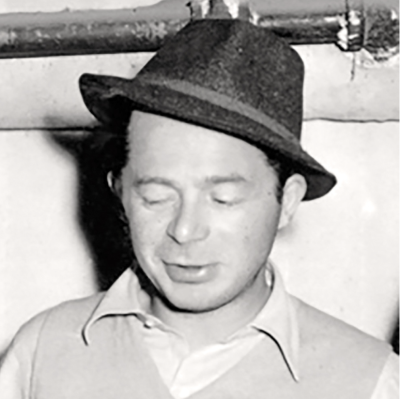




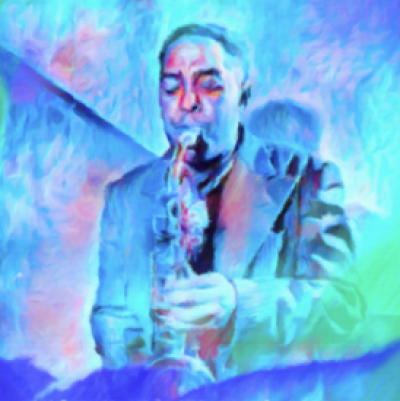
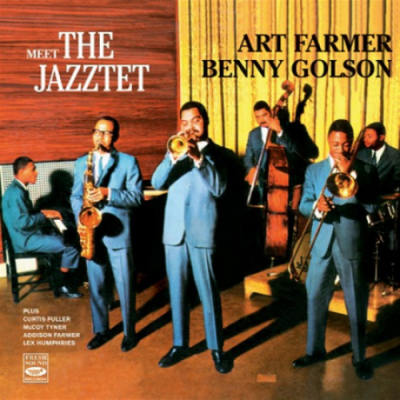




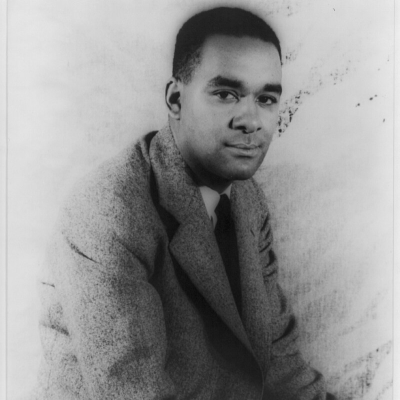
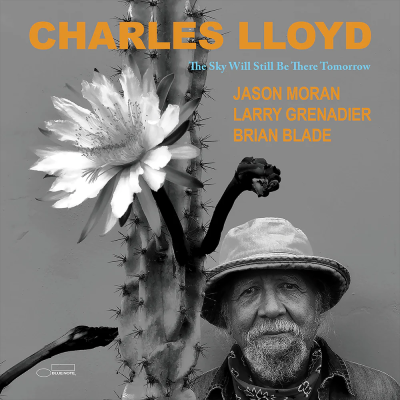
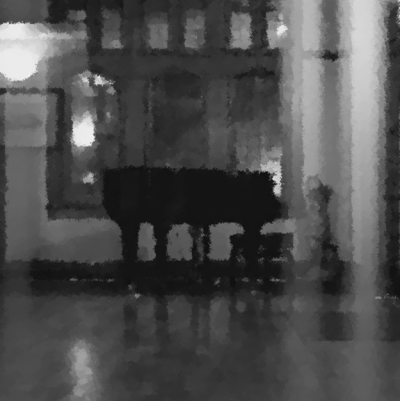


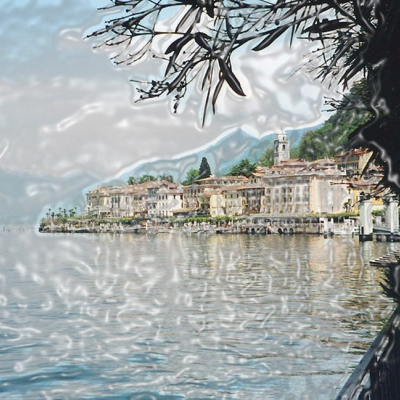

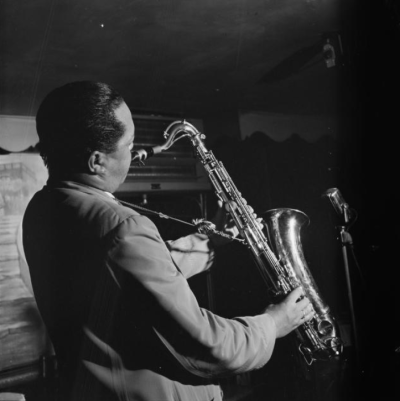


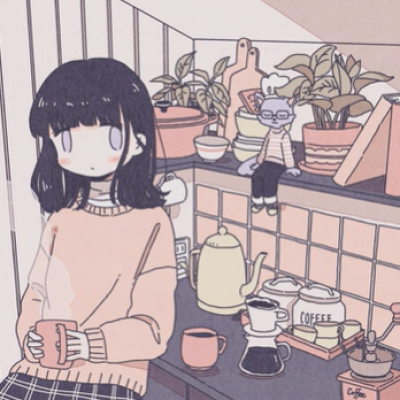
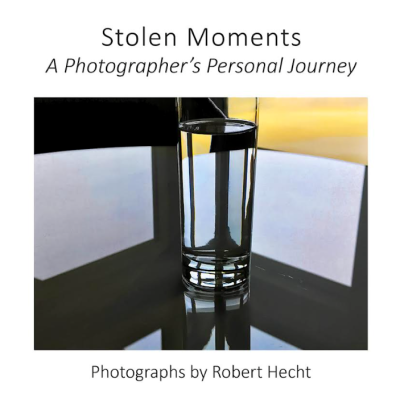

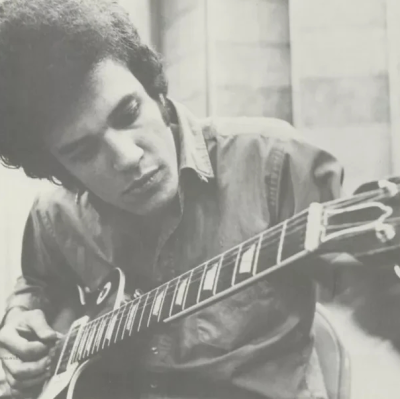
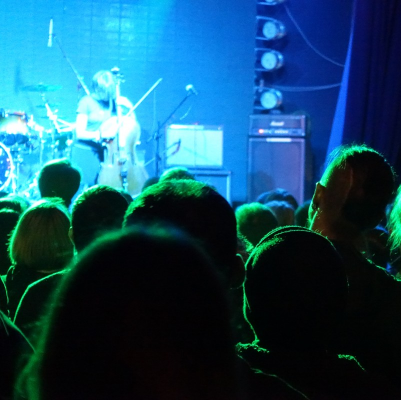






A big yes to Shelley Manne’s 2-3-4…a classic!
I guess I have to do some listening here…I don’t know this album. My favorite Manne recording is “My Fair Lady,” but if memory serves that was a mid-50’s recording. I do like the “At the Manne-Hole” album from the early 60’s though…
Recorded in 60, released in the 70s: Mingus at Antibes
Most personally resonant lists: Don Byron, Marc Myers. Honorable mention: Ryan Truesdell
Great post idea, thanks
Thanks…If you have a question idea for a future edition, please feel free to pass it along!
I’m just amazed that no one has chosen “Forest Flower” Keith Jarrett,Charles Lloyd etc. extraordinary music,which delights year after year
I am somewhat surprised by this as well, but man, there were so many incredible albums from the 60’s.
Yes to John Coltrane’s Crescent, Duke Ellington’s Far East Suite, Gill Evans Out of the Cool, and Sonny Rollins The Bridge
Four of my personal favorites:
1. Stanley Turrentine Joyride- Classic hard bop with Herbie Hancock and Kenny Burrell swinging some R&B chestnuts with arrangements by Oliver Nelson.
2. Oliver Nelson Blues and the Abstract Truth
3. John Handy Live at Monterrey
4. John McLaughlin Extrapolation
I like your choices…especially the Oliver Nelson album, which surprises me that it wasn’t on anyone’s list. “Teenie;s Blues” is a great tune.
I’ve always had fond memories of the John McLaughlin album. I bought it as a teen in the mid 1980’s at a jazz record store in Philadelphia along with John Coltrane Crescent. The rock drumming legend Bill Bruford mentioned Extrapolation as an album he listened to for inspiration in a Modern Drummer interview back then. Binky’s Beam, It’s Funny and Arjen’s Bag still hold up as some of John McLaughlin’s finest compositions. The first two jazz albums I ever bought and I still listen to them.
I find it strange that no one else included “Rah,” the first album by Mark Murphy which really showed off his jazz vocal chops. Three other personal favorites are as follows:
“Blues and the Abstract Truth” – Oliver Nelson (The charts are still among the most thrilling I’ve ever heard. Ironically, though, I first heard “Stolen Moments” as the background to a commercial for a radio show, “The Apartment Gardener”!)
“Maiden Voyage” – Herbie Hancock (My introduction to the power of Herbie’s music, as well as the playing of Freddie Hubbard.)
“The Gigolo” – Lee Morgan (I first heard the title track, “Yes I Can, No You Can’t,” played by DJ Ed Beach on WRVR. To this day, “The Gigolo” is one of those albums guaranteed to lift me, when I’m going through a blue period.)
Yes…”Maiden Voyage” seems like it should be on more lists…
Miles – Nefertiti
Miles – In a Silent Way
Coltrane – Crescent
Rollins – The Bridge
Not the most adventuresome picks, but 4 that I will never get tired of hearing.
All have made it to my turntable, and they all still sound good to this day.
I’d really like to call bluff on those ‘Unit Structures’ mentions. Do these people hum along with that? No, really! Or perhaps I should say: these folks must have something more hummable in their collections that they enjoy more than Unit Structures. Perhaps these surveys should be anonymous, so that no extraneous motives can sneak in. I’m all for avant-garde but I’ve never understood the appeal of Cecil Taylor.
Cecil isn’t for everyone, for sure, but Unit Structures is pretty accessible…What is an example of an album from the 60’s that you like?
Well, in addition to many of the names already mentioned by others, how about Booker Little (underrated, imo; listen for instance to the track Victory and Sorrow on Booker Little and Friends), or Jackie McLean, or Andrew Hill, for instance. Or Sam Rivers’ Fuchsia Swing Song. Or some of Anthony Braxton’s more accessible stuff. Hell, even with people like Albert Ayler or Marion Brown, it’s easier to see what they’re up to than Cecil Taylor (in my opinion). But perhaps I should just give Unit Structures another listen.
Unit Structures was one of the first jazz albums I ever bought, in 1971 — a mono cutout copy for 99 cents from the A&P a block from my house. I had seen the name somewhere and the liner notes together with the cover design aroused my curiosity. I was a young underground rock fan just beginning to explore jazz, and this album took my head apart and reassembled it ways I never recovered from (the only thing that came close in my experience were the little piano bits in King Crimson’s “Cat Food”). I still consider it one of the greatest albums of the time, and one of my most profoundly life-changing musical experiences.
CT’s music is hard for some to justify as jazz, but even when those roots are not overt, they are implied. It’s as if an abstract painter created a realistic landscape and painted over it in a freer fashion. The finished product would not have been the same without the initial framework. CT came out of jazz and never really left it, however far out he went. Same is true for Trane, whose later music leaves some cold; that later stuff was the first Trane many of us who came to jazz in the 1970s heard because it was the most recent and still being posthumously released. For me, apart from a falling off due probably to illness and exhaustion at the end, Coltrane’s music steadily evolved and moved forward, building on what came before, until it reached a kind of nirvana.
Hard to disagree with Miles and Trane, and for me that would be Nefertiti and A Love Supreme, if I could only choose one. Next would be Bill Evans Sunday at the Vanguard (or, why not, the whole Vanguard set), Eric Dolphy’s “Out to Lunch”, Andrew Hill’s “Black Fire” or “Point of Departure” (I can’t choose) and Cecil Taylor “Unit Structures”. A little of everything, and perhaps Randy Weston’s “African Cookbook” to bring it all home.
Chick Corea’s “Sundance”, Lee Morgan’s “The Procrastinator”, (which was released in the 1970’s, but recorded on various dates of the 1960’s), Bill Evans’ “Trio ’64” and Dexter Gordon’s “Go!”.
Surprised no mention of Larry Young’s “Unity” Not only for the music but also for the great album cover, one of Reid Miles best.
I’ll toss Herbie Hancock’s “Speak Like A Child” into the mix. It’s understated and remains very listenable.
I can’t argue with those who suggest Oliver Nelson’s “Blues and the Abstract Truth.”
Lee Morgan’s “Search For The New Land” has to be on my list.
And these three titles just made me think of ten more. This is a great exercise. It got me to dig deep into the collection and I’m sure many others did the same.
LIke some say, each day would bring different entries, but these would stay consistent:
A Love Supreme
Spiritual Unity
Roland Kirk’s Inflated Tear
Mingus’ Black Saint and the Sinner Lady
Impossible task only picking 3 or 4. Here are a few of my favorites (and I’m deliberately not picking albums from Trane or Miles as they would have 3 or 4 each):
1.) Booker Ervin – the “Book” series – Freedom, Space, Blues, and Song Book albums. All awesome.
2.) Hank Mobley – Soul Station. Really cool to hear him in a quartet setting and some great playing throughout. Also love A Slice of The Top. That one is in a larger ensemble setting and includes great piano from McCoy Tyner.
3.) Booker Little – Out Front. Never get tired of this album. This one is on my turntable at home now.
4.) Wayne Shorter – JuJu. Some of my favorite tunes by Wayne are on this one.
And I’ve already used up my 3 or 4 and haven’t even mentioned Art Blakey, Freddie Hubbard, Sonny Rollins (Newk’s Time), Wes Montgomery (Incredible Jazz Guitar) …..
Greg, I like the way you eliminated the “obvious” choices and focused instead on the “secondary” players. I don’t think anyone else has taken that approach. Nice list!
Great selections from everyone – makes me want to dig out things I have not listened to for a while. Here are my choices:
Mulligan Concert Jazz Band, Zurich 1960 – Swiss Radio Days Series 12;
Art Pepper Plus Eleven;
Quincy Jones Band, The Quintessence;
Pete Jolly, Little Bird.
Bought my first jazz LP from a Woolworth’s cutout bin on a whim in 1970 (The Shape of Jazz to Come by Ornette Coleman), so a lot of 1960s jazz was new to me in the decade that followed. And it was such a phenomenal era that it would be easier to list 3 or 4 that are NOT favorites. I’m going to disqualify the obvious monsters and list some that I think were/are underrated.
Song For, Joseph Jarman
On This Night, Archie Shepp
Symphony for Improvisers, Don Cherry
Karma, Pharoah Sanders (nobody liked it but the millions of fans)
Pretty amazing what was turning up in the cutout bins in those days.